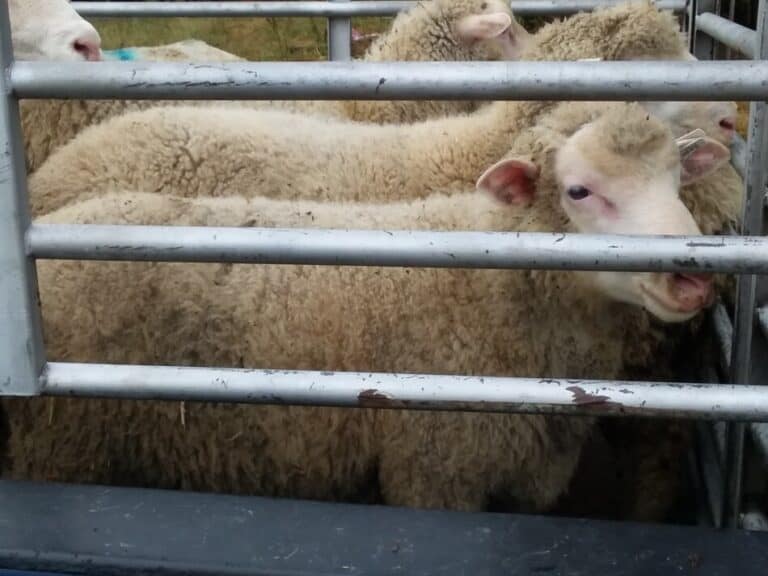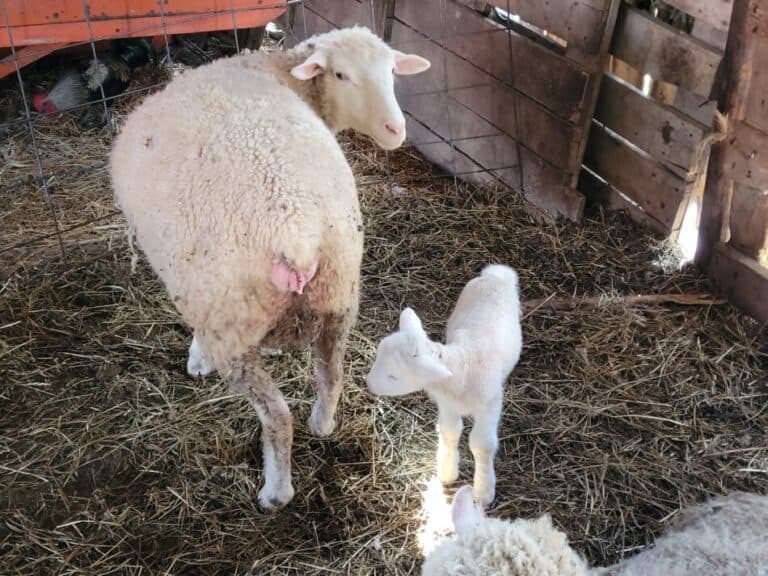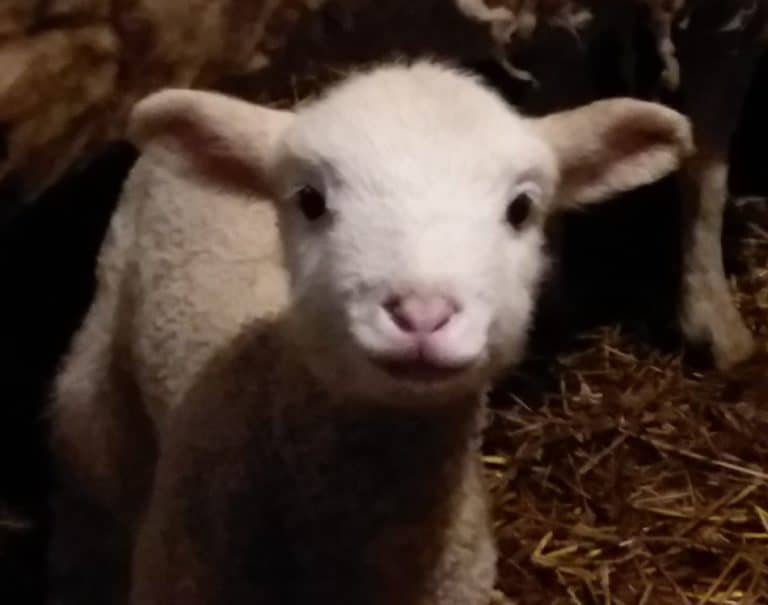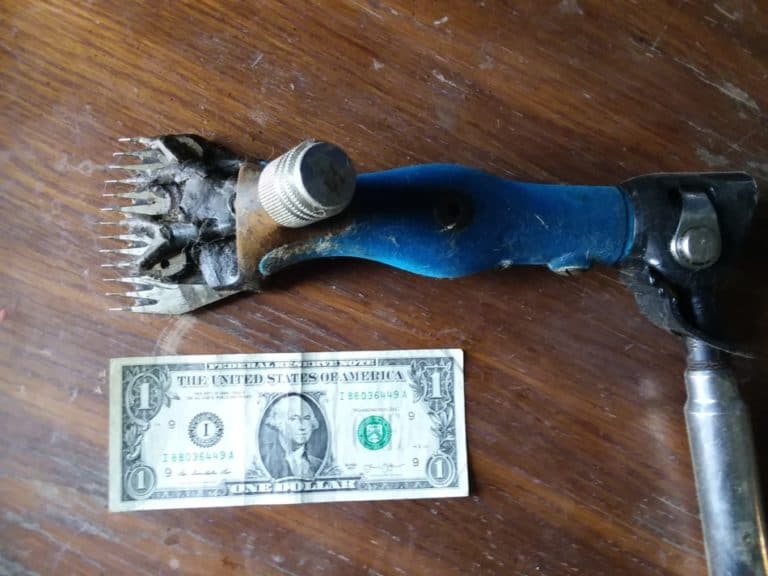What To Do If A Sheep Rejects Or Disowns Her Lamb
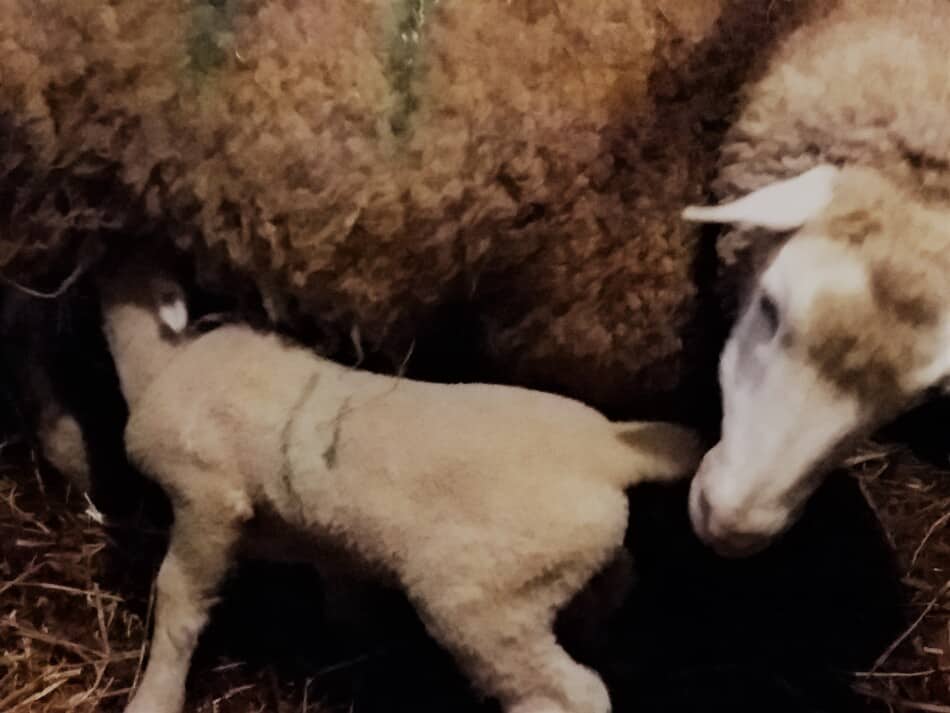
Rejected or disowned lambs, can happen in most any flock and are one of the more confusing parts of lambing season to deal with. What can you do if you notice that a ewe has rejected her lamb?
If a ewe rejects or disowns a lamb, you can try to rebond the ewe and lambs or see if a ewe whose lambs have died will take the rejected lamb as her own. If you can not get a ewe to take care of the rejected lamb, you will need to keep the lamb as a bottle baby.
Lambing Season: What To Expect is an article I wrote to help beginners get an overview of some of the lambing season and how to be ready!
Make sure the rejected lamb is actually her lamb
If a ewe rejects a lamb, the first thing to do is to make sure it’s actually her lamb to begin with! I know this one sounds so obvious, but it’s really the first thing to consider when you think you have a rejected lamb.
Lambs can take off after a ewe that is not their mom, then end up looking like a rejected lamb, when they really are a lamb that followed the wrong ewe.
Lambs can get mixed up at birth
There can be quite a bit of confusion during lambing, whether the ewes are in the barn or on the field and sometimes moms and babies get mixed up.
It is very unlikely that a ewe will take a lamb that is not hers, so be sure that you have the ewe and the lambs matched up correctly.
During lambing season, we have some pretty big days, where quite a few ewes decide to go into labor. We are out in the lambing pasture all of the time and do our best to keep things straight, but sometimes there are mix ups.
When this happens, you just have to do your best to put the most likely pairs together and see how the ewe takes it. She’ll let you know if she’s not happy!
A key point is to check out the umbilical cord of the lambs. Twins are going to have the same “wetness” of the umbilical cord. If you have a super confusing situation, matching the umbilical cords is your best shot.
Lambing Supplies goes over our list of must haves and a few things we haven’t found to be helpful, despite being on most other shepherd’s supply list.
Make sure the rejected lamb is capable of keeping up with the ewe
Make sure the lamb is fine, by that I mean capable of keeping up with his mom and twin. If the lamb can not keep up, it will get left behind and you will find it dead. I know that sounds harsh, but it’s true.
If the lamb can’t keep up with his mom, it’s easier to bring him in as a bottle baby.
The other thing to know is that sometimes lambs are born with “something” wrong. They just are not right. If the ewe can tell, she will leave the lamb. This is another case of a lamb that you should take as a bottle baby.
Pen up the ewe with the rejected lamb, monitor the pen!
If you are willing to try to see if the ewe will take back her other lamb, after you have determined that it is actually her lamb, then you need to confine her to a small pen, called a lambing jug.
Be aware that if the ewe is convinced the lamb is not hers, she can hurt it while trying to keep it from nursing. Your job is to prevent this from happening.
This means you’ll need to monitor the pen, until you are sure the rejected lamb is not the target of head butting from the ewe. If you are not able to keep watch on the pen, do not put the rejected lamb in, keep it as a bottle baby.
Sometime the ewe needs to be haltered or put in a head lock
Farmers that deal with rejected lambs have a head lock type stall that keeps the ewe from hurting the lambs, but they can still nurse. After a few days, the lambs smell like they belong to that ewe and she can come out of the head lock.
For either halter or stanchion, know that it will either work or not work within 2 days. Trying for longer than that does not normally result in anything but more frustration.
The head lock or stanchion keeps her head in a confined space, but she is free to get up and sit down as she pleases. This is very confining and should only be used for a day or two.
Sometimes a ewe does not need a head lock, but will need to be put on a halter and held while the lambs nurse. So, she is not head butting the rejected lamb, but she won’t let it nurse either. This is the method we use.
Halter her up for a few days and see if she will accept the lambs. Usually, if she’s going to change her mind about them, it will happen in the first two days.
This group still needs to be kept in a small pen for a few more days, making them easy to supervise to be sure the ewe is okay with those lambs.
Turn the bonded group out into a small pasture, not into the main flock
After a few days of things going well, the new group can be turned out, preferably to a smaller pasture that is easy for you to keep track of them in.
If you have to, you can turn the bonded ewe and lambs out with the main group, but this will increase the likelihood of problems coming back up.
Be sure you have the ewe and the lambs marked so you know who is who out there and can check back on these guys specifically.
I’m suggesting you keep track of your rebonded ewes and lambs by specifically finding them multiple times per day for a few days, then, if they have been doing well on your check ins, you can drop back the checks to once per day.
The reason for all of this monitoring is that it seems that ewes or lambs with problems continue to have problems, so your rebonded group needs monitored to make sure the ewe doesn’t ditch a lamb.
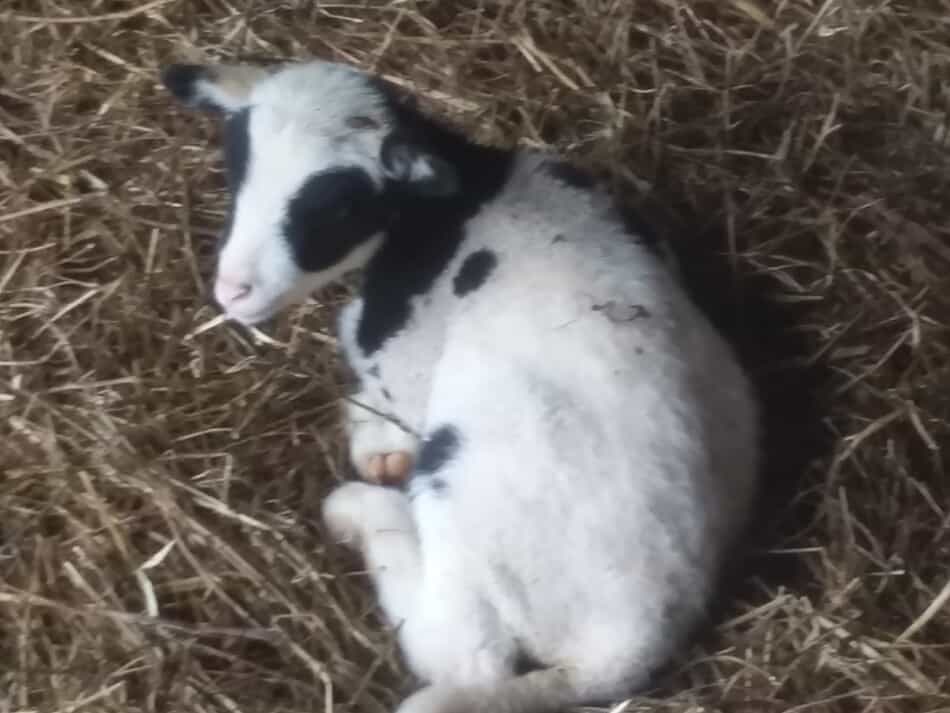
Take the lamb as a bottle baby
Any time in this process, you can take the lamb as a bottle baby. True, it is easier if the ewe will accept the lamb, but sometimes this will take quite a bit of work on your part!
If you are not willing to finish what you start, as far as taking time every 4 hours or so to help the lamb nurse (for the next few days!), just take it as a bottle baby to begin with.
Bottle lambs must get colostrum, too!
I do have to mention, it is well worth your effort to make sure the rejected lamb gets colostrum!
Even if you have to halter up the ewe and hold up the lamb to nurse, or milk out some of the colostrum into a bottle and feed the rejected lamb that way.
Without the colostrum, your bottle lambs are not likely to live through to weaning. They seem to be fine for 10 days or so, then go downhill and you can’t save them.
Get them the colostrum or use a replacement powder, it’s vital to that lamb!
Bottle Lambs goes over some of the challenges you will face when taking care of your bottle lambs.
You can try to graft the rejected lamb on to another mom
When you graft a lamb, this means you try to convince the ewe that a lamb that is not her biological baby is really her lamb. Sometimes it works, sometimes it doesn’t.
You can try to graft your bottle lambs onto a new mom, especially a ewe that has a dead baby or just one baby. If the grafting works, that ewe now has a lamb to take care of and you have one less bottle baby.
Wet graft lambs by rubbing birth fluids on the lamb to be adopted
Grafting will go better if you are there for the birth and can rub the birth fluids all over the rejected lamb, this way it smells like the biological lamb.
The only catch here is, make sure you are grafting the rejected lamb to a ewe that is only having one baby. If she has twins, the grafted lamb will take her up to three, which is too much.
Skin grafting lambs is an advanced technique
Another type of graft is a skin graft, which this is an advanced technique. It involves skinning out a dead lamb and putting the skin on the lamb to be grafted, to make the ewe think that her dead lamb is still alive.
Skin grafting is not for everyone, and, sadly, it is not a surefire solution. In our experience, about half of these grafts take, especially if the ewe you are trying to graft to is older. She knows the game and is harder to fool.
Skinning A Lamb To Get A Ewe To Foster A Triplet is an article written by Irish sheep farmer John Shirley, about some of his lambing protocols.
Know that dealing with rejected lambs will take time
As mentioned above, unless you are willing to put in the effort, repeatedly over the next 2 days or so, it will be easier for you to just take all rejected or disowned lambs as bottle babies.
Also know that once it looks like the lambs are working out with their new mom, you still need to check back and make sure the ewe is still taking good care of her formerly rejected or disowned lamb.
If you have successfully bonded a bottle baby to a new mom, you’ll need to check these guys, as well.
As long as the bottle baby comes up to you, you need to keep feeding it. Once it gets all it wants from it’s new mom, it will stop coming to see you.
A ewe can reject just one or all of her lambs
A ewe can reject just one or all of her lambs. Sometimes she will keep one and ditch the twin, sometimes, in the case of triplets, she will take off with the stronger lambs and leave the small, weak one.
Occasionally, a particularly poor mom will reject both her lambs, so she doesn’t like either one! This seems to happen more frequently with first time lambers, especially the more high strung individuals.
A ewe that rejects her lambs completely is a cull. Do not keep her.
A ewe that keeps one, but rejects the twin is a possible cull.
If she will take back her lamb and you are willing to give her another shot next time, just make note of who she is and see how she does next lambing. If she does not take the lamb, cull her. If she rejects a lamb next year, cull her.
If rejecting lambs is rampant in your flock, something is wrong. We estimate our “rejection rate” at about 2%. If you are getting more than this, definitely change your management and heavily consider changing your flock’s genetics.
If you want more of an overview of lambing in general, read Sheep 101: Lambing. Be sure to click around on the site, they have quite a bit of information and look under Sheep 201 for more advanced topics.


